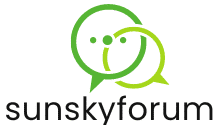How Can Personalized Digital News Platforms Enhance User Experience?

In a rapidly digitizing world where a wealth of information is at the fingertips of users, it is no longer sufficient for news platforms to provide a one-size-fits-all content. The demand for personalization is more significant than ever. Users expect to receive news and media tailored to their interests, habits, and preferences. This article explores how personalized digital news platforms can enhance the user experience, with a focus on content personalization, data-driven engagement strategies, and the role of social media platforms in delivering personalized content.
The Power of Content Personalization
Content personalization is a key strategy that digital news platforms can use to improve the user experience. This approach involves tailoring the content that each user sees based on their individual preferences, behaviors, and past interactions with the website.
Cela peut vous intéresser : How Can Advanced Ceramics Improve Heat Management in UK’s Industrial Processes?
As a user, imagine logging onto your favorite news site and always finding articles that capture your interests. This might include news about your favorite sports team, articles about current issues that you care about, or features related to your hobbies or professional interests. Would you be more likely to engage with the content? Would you spend more time on the site? The answer is likely yes.
According to a study by OneSpot, personalized content marketing can lead to an 80% increase in engagement rates. This shows how the personalization of content can significantly improve the user’s experience on digital news platforms.
Sujet a lire : How Are Interactive Digital Museums Changing the Landscape of Art Education?
Leveraging Data for User Engagement
Data is a critical component in the personalization process. By collecting and analyzing data about users’ behavior and preferences, digital news platforms can deliver a more personalized experience. This starts with understanding the user’s interests and preferences.
By tracking which articles a user reads, what topics they search for, and how long they spend on different sections of the website, news platforms can build a comprehensive profile of each user. This profile can then be used to predict what content the user will be interested in and deliver a personalized experience.
The use of data for personalization extends beyond just the content. It can also be used to tailor the way the content is delivered. For example, if data shows that a user typically reads news in the morning, the platform could send a personalized email with the latest news at that time. Or if a user typically engages with video content, the platform could prioritize videos in their news feed.
The Role of Social Media in Personalized News
Social media platforms play a crucial role in delivering personalized news content. They provide a treasure trove of data about users’ interests, behaviors, and preferences. This data can be leveraged to deliver a highly personalized user experience.
Users often share news articles and other content on their social media accounts. By analyzing this data, news platforms can gain insights into what topics and types of content are most popular among their audience. They can also see how users engage with different types of content, which can inform their content strategy.
Further, social media platforms offer powerful targeting tools that news platforms can use to deliver personalized content. For example, they can target users based on their location, demographics, interests, and even their behavior on the platform.
Personalizing the Digital User Experience
In an age where users are inundated with content, personalization is key to cutting through the noise and delivering a valuable user experience. Digital news platforms that implement personalization strategies will be better positioned to engage their audience and drive user loyalty.
The use of data is central to delivering a personalized experience. By collecting and analyzing data about users’ behavior and preferences, digital news platforms can tailor their content and delivery methods to meet the unique needs of each user.
Finally, the role of social media in delivering personalized news cannot be overstated. By leveraging the data and tools available on these platforms, news organizations can deliver a highly personalized and engaging user experience.
The trend towards personalization in digital news is clear. As users, we can expect to see more news platforms delivering content that is tailored to our interests, habits, and preferences. As we move further into the digital age, the power of personalization in enhancing the user experience will only become more evident.
Artificial Intelligence and Machine Learning in Content Personalization
Artificial intelligence (AI) and machine learning (ML) technologies are becoming increasingly crucial in content personalization. These technologies allow digital news platforms to analyze vast amounts of data in real-time and deliver personalized content recommendations to users. This not only enhances the user experience but also makes the digital experience more engaging and intuitive.
AI and ML have the ability to learn from the patterns of users’ behaviors, preferences, and habits. For instance, they can track the types of articles a user reads, the time they spend on different sections of the website, and what topics they search for. Based on this data, AI and ML can provide personalized content that the user is likely to be interested in.
These technologies can also identify trends and patterns within larger groups of users. This can help news organizations to understand their audience better and tailor their content accordingly. For example, if AI identifies a trend that a large number of users are interested in environmental issues, the news organization could increase its coverage on this topic.
Moreover, the real-time capabilities of AI and ML offer significant advantages. For instance, if a major news event happens, AI and ML can quickly analyze the new data and provide relevant content recommendations to users. This makes the news experience more timely and relevant for users, thereby improving the user experience.
Future Trends in Personalized Digital News Platforms
Looking forward, we are likely to see a further increase in the use of AI and machine learning in personalized digital news platforms. AI and machine learning will continue to improve and become more sophisticated, which will enable even more precise and personalized content recommendations.
News organizations and media companies are likely to invest more in these technologies as they recognize the value of personalization in enhancing the user experience. In addition, as privacy concerns continue to be a major issue, these organizations will need to find ways to deliver personalized content while still respecting user privacy.
Furthermore, we can expect to see a greater integration of social media and news platforms. Social media platforms provide a wealth of data about users’ interests and behaviors, which can be used to deliver personalized content. As such, news organizations and media companies will likely seek to leverage this data more effectively.
Finally, as users become more accustomed to personalized content, they will likely come to expect this level of personalization from all their digital experiences. This will put pressure on news organizations and media companies to deliver a truly personalized experience that meets the unique needs of each user.
Conclusion
In conclusion, personalized digital news platforms offer a powerful way to enhance the user experience. By tailoring content to users’ individual interests, habits, and preferences, these platforms can increase engagement, drive user loyalty, and deliver a more satisfying digital experience.
The use of technologies such as artificial intelligence and machine learning in content personalization is likely to increase in the future. These technologies offer significant advantages in terms of their ability to analyze large volumes of data in real-time and provide personalized content recommendations.
The integration of social media and news platforms is also likely to play a major role in the future of personalized digital news platforms. Social media offers a valuable source of data about users’ interests and behaviors, which can be used to deliver a highly personalized user experience.
Overall, the future of personalized digital news platforms is bright. As we continue to move further into the digital age, the demand for personalization in news is likely to grow. News organizations and media companies that are able to effectively meet this demand will be well-positioned to succeed in the digital age.
